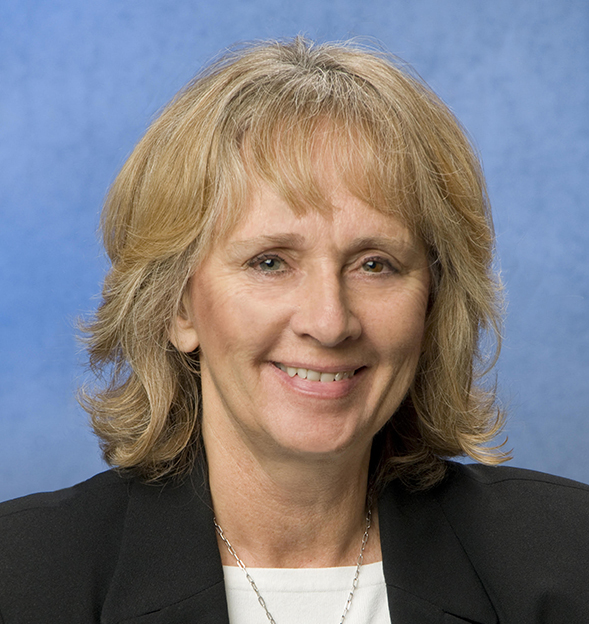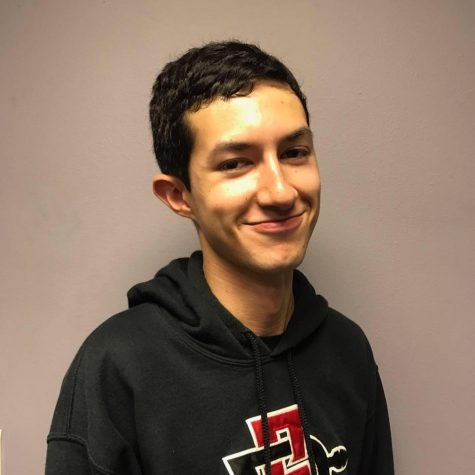It was supposed to be an ordinary day for Sally Roush.
The retired San Diego State administrator was spending the day at the wild animal park with her two grandchildren, ages 7 and 2.
As they were leaving the park, her phone rang.
Normally, Roush doesn’t like to answer phone numbers she doesn’t recognize. But she saw the 562 area code and thought it might be someone from the California State University Office of the Chancellor.
As it turned out, it was.
When she picked up the phone, she heard the voice of CSU Chancellor Timothy White.
This a day not long after SDSU President Elliot Hirshman announced he was leaving his position to take over as president of Stevenson University, near Baltimore, Maryland.
“My first thought was that he was calling to get contact information for someone to talk about the position,” Roush said.
Close, but not quite.
Instead, White asked her to consider taking over for now-former President Hirshman until the CSU could find a permanent replacement.
“I was just speechless,” Roush said. “He said, ‘You don’t have to decide right now,’ and I said, ‘Well, that’s good because I’m at the wild animal park, I’ve got the 2-year-old in the stroller, and I think I need to pull off the pathway here.”
Roush said she had to think about the decision long and hard. It would be a significant time commitment, and would take her time away from her grandchildren. But she also felt she could help the university avoid an upheaval of a year: being a longtime SDSU administrator, she said she already knew the campus and thus could be a more effective president than someone from a different campus.
The two agreed to discuss the position the following week.
“At the end of the day, he was persuasive and I agreed,” she said.
Roush is serving as interim president until a permanent replacement for President Hirshman is appointed by the CSU Board of Trustees. The replacement is expected to be selected and in office before summer 2018.
***
Roush is the first woman to serve as SDSU’s president in the institution’s 120-year history.
With her appointment, the CSU now has more female presidents than male ones.
But she said these aren’t facts she really thinks about.
“I actually think it’s sad that we have to talk about it, because I think after so much time has passed, the notion that a woman has achieved something and it’s somehow noteworthy is a sad commentary that we have a lot further to go than I thought we did,” Roush said in an interview Aug. 14. “I’m pretty sure that isn’t why the chancellor asked me to do the job. I do know that he’s committed to getting the best candidate for every position and if it’s now more women than men, that just is what it is.”
Roush has a long history at SDSU, and at universities in general.
She graduated from the University of Denver with a degree in sociology before working in a position overseeing personnel and payroll at the University of Colorado, Denver.
She accepted her first position at SDSU in 1982, also in human resources.
From there, she gradually moved up through the ranks.
In 1994, then-Vice President of Business of Financial Affairs Bill Erickson, who was retiring, told Roush she should apply for his position.
“So I thought about it and, what was the worst that could happen? I wouldn’t get the job. But I still had (my own) job.”
Roush said she was among three finalists recommended by a national search committee to Thomas Day, SDSU president at the time. Ultimately, Day selected her.
“There’s a dynamic around that,” Roush said. “People know you really well when you’ve already been somewhere, so they know your good qualities and also your poor qualities. I always took it as a point of pride that even though they knew the worst of me, people still recommended me.”
Roush spent 31 years working at SDSU.
She said one reason for staying in San Diego so long was her children. “When I moved here, my daughters were very young,” she said. “They were 5 and 7. So in part, having them not move again was important.”
It also helped that she enjoyed both the university and her job.
“I quickly loved San Diego State,” she said. “I worked with wonderful people. I’ve worked over the years with three presidents of the university’s eight, which is pretty remarkable. And there was never a day that I was bored.”
She also said she sees the purpose of her job as one that she values highly: to contribute to the education of future citizens. It’s work that Roush said she finds rewarding and fulfilling.
“We do it sometimes against all odds with budget reductions and rules and regulations that just seem to come out of nowhere and through it all, we, I think, do a very incredible job of providing a great education for our students,” Roush said.
Even after her retirement in 2013, she’s maintained some involvement with the university.
Roush advised the university for Destination SDSU, a $1.3 million project to improve signage on campus that was announced in spring 2016.
It was a project that angered some students at the time. One of the main criticisms was that the university could use the money for the project on other things, like building new parking structures or hiring more faculty.
Roush defended the signage improvement project.
There are many things at a university that must be attended to, she said, and there is never a singular focus on any one particular issue.
“Because if you disregard how the classrooms are kept up, if the classrooms aren’t clean, then you’re not gonna have the same quality of educational experience,” Roush said. “And if people are always getting lost when they come to campus, it’s a frustration, they don’t want to come back. So you have to weigh all those sorts of things.”
And she said the new signage was quite a worthy improvement over the old sign system, which she described as “a mess.”
“Have you ever tried to tell somebody how to get to North Life Science on their first day of class? I rest my case.”
Roush also helped the CSU system by advising Cal Poly San Luis Obispo and Sonoma State University. And she served as an interim chief financial officer for the chancellor’s office for about six months — which is how Chancellor White knew her.
So when White asked Roush to accept the interim presidency at SDSU, it was already the second time she had been asked to come out of retirement.
“It’s only a year,” she said. “But it’s also a year.”
***
After 31 years at SDSU, Roush knows university presidents are no strangers to controversy.
President Hirshman was criticized for many of his actions over the course of his six-year tenure, most notably in April 2016 when a police cruiser he was riding in was surrounded by protesters angry about his response to flyers posted around campus naming members of Students for Justice in Palestine as terrorists. But she stands by the decisions her previous bosses have made.
“I’m not going to second-guess anything that president(s) Hirshman, Weber or Day did,” Roush said.
She brought up the recent events in Charlottesville, Virginia, where white supremacist and neo-Nazi groups held a rally that resulted in clashes between protesters and counter-protesters, and killed one woman. The president of the University of Virginia received some criticism for her failure to explicitly name white supremacy in her statement about the rally.
“I’m the first one to say that it shouldn’t be held against people when they make an error in judgement,” Roush said. “You know, she said what she said, she did what she did. She didn’t intend to be irresponsible or hurtful, but they were caught off-guard.”
Roush said she’s not sure she or anyone else would know how to handle such an incident 100 percent correctly.
“I would have to say if we ended up with people here marching with torches on a Friday night, it would be pretty remarkable,” Roush said. “We would have to do the best we could.”
She said if something like what happened in Charlottesville ever were to come to SDSU’s campus, she would lean on her cabinet for guidance.
“I have a lot of confidence in the people within our organization whose job and skill it is to respond to situations like that,” she said. “There are lots of people that can get involved in a circumstance like that and help defuse the tensions, help decide









